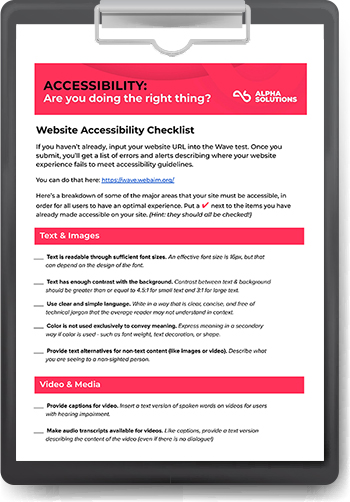If you want to remain relevant (or even if you just want to remain) in today’s competitive marketplace, you have to stay on top of…
-
technological advancements,
-
changing market dynamics,
-
and B2B E-commerce trends.
We’ve got you covered.
This post explores eight current trends in B2B e-commerce. Follow along as we examine how you may leverage them for the growth and success of your enterprise.
Let’s start with a quick definition…
What is B2B E-commerce?
B2B E-commerce (business-to-business electronic commerce) refers to the sale of goods or services between businesses via online platforms. Unlike B2C (business-to-consumer) e-commerce, which targets individual consumers, B2B E-commerce typically involves transactions between manufacturers, wholesalers, distributors, and other business entities.
8 Key B2B E-Commerce Trends To Look Out For
Now that we have the definition of B2B e-commerce out of the way, let’s explore the first B2B e-commerce trend on our list and look at how digital transformation is reshaping our online landscape.
1. Digital Transformation and E-Commerce Adoption
One of the most significant trends in B2B E-commerce is the accelerated shift towards digital transformation.
The COVID-19 pandemic (remember that?) was a catalyst for many businesses, pushing them to quickly switch to digital.
B2B E-commerce platforms were at the heart of digital transformation, allowing companies to:
-
streamline the sales process,
-
improve the customer experience,
-
and reach new markets.
Moreover, these platforms can integrate with other business systems (like ERP and CRM), enhancing data synchronization and operational efficiency.
Several major brands across various industries have effectively embraced digital transformation and e-commerce adoption to reshape their B2B E-commerce strategy.
Here are two relevant B2B E-commerce examples:
🚘 Bosch has long been at the forefront of digital transformation in the automotive and industrial sectors.
Its B2B e-commerce website portal offers a wide array of products and services, from automotive parts to industrial tools.
Bosch has integrated this platform with advanced analytics to predict customer needs and tailor offerings, improving customer satisfaction and operational efficiency.
🛠️ Honeywell has transformed its B2B E-commerce strategy by integrating digital technologies, including building technologies and performance materials across its product lines.
The Honeywell Forge platform, for instance, provides clients with a powerful tool for monitoring, managing, and optimizing their operations remotely and in real time.
This strategy fosters greater responsiveness and flexibility in business operations.
As digital platforms become integral to B2B E-commerce strategies, another trend closely follows: the prioritization of personalized customer experiences.
Which brings us to our next B2B e-commerce trend.
2. Personalization and Customer Experience
B2B buyers expect a customer experience that mirrors B2C shopping. This includes personalized interactions, recommendations, and support.
Luckily, advanced data analytics and AI technologies are enabling B2B e-commerce companies to offer these personalized experiences at scale.
By analyzing customer data, businesses today can understand buyer preferences and behaviors, allowing them to tailor their marketing and sales strategies accordingly.
This not only improves customer satisfaction but also drives loyalty and repeat business.
Many big brands are leveraging personalization and enhanced customer experiences… even in the B2B space. These efforts provide a level of service and customization previously exclusive to B2C.
Here are two relevant B2B E-Commerce examples:
☁️ Ahlsell, a leading distributor of installation products and tools in the Nordic region, has advanced B2B personalization through innovative strategies. The catalog includes more than 430,000 product numbers for the industrial and construction industry.
By leveraging data-driven insights and advanced personalized technology, Ahlsell tailors onboarding experiences to meet the unique needs of each new customer. This approach makes each search experience personalized to each customer. The result is an effective experience that helps the customer and creates strong loyalty.
Such targeted personalization fosters stronger customer relationships and improves engagement.
📇 HubSpot offers an all-in-one marketing, sales, and service platform that empowers B2B E-commerce companies to tailor their marketing efforts.
By using HubSpot’s CRM and automation tools, companies can create highly personalized content and engagement strategies based on user interactions and data insights.
This leads to a more personalized journey that nurtures leads more effectively and drives conversions.
This is exciting stuff, but personalization is only the beginning. The integration of AI and automation technologies is revolutionizing B2B E-commerce even more.
Here’s how…
3. Increased Use of AI and Automation
It’s not breaking news that Artificial Intelligence (AI) and automation are playing transformative roles in B2B E-commerce (and everywhere else)..
From automated customer service bots and intelligent product recommendations to predictive analytics for inventory management, these technologies are making transactions for B2B E-Commerce companies smoother and more efficient.
For example, AI tools can help with…
… price optimization
… forecasting
… personalized content generation
This reduces the workload on human employees, allowing them to focus on more strategic tasks.
The use of AI and automation in B2B E-commerce is rapidly becoming a cornerstone for businesses aiming to optimize operations and improve service delivery.
Here are two examples of brands using these technologies well:
💻 IBM is a pioneer in AI with its Watson (now, watsonx) platform, which has broad applications across various industries.
In B2B, watsonx offers AI-powered solutions that automate complex processes, enhance decision-making, and provide predictive analytics.
For instance, IBM's supply chain solutions use watsonx to forecast demand and optimize inventory, reducing costs and improving service reliability for its B2B clients.
🤖 Microsoft integrates AI-powered Copilots within its ERP solutions, such as Dynamics 365 Business Central and Dynamics 365 Finance & Operations, to improve service reliability for B2B clients.
These tools leverage AI to enhance various aspects of business operations, including finance, supply chain management, and customer service.
By using intelligent automation and predictive insights, Microsoft’s ERP Copilots help businesses streamline financial processes, optimize supply chain operations, and boost overall efficiency in their B2B interactions.
While AI enhances efficiency and customization, sustainability and ethical practices are becoming equally as important. Especially with Gen Z now having their own credit cards.
Let’s look at B2B E-commerce companies incorporating these values into their operations.
|
How accessible is your website? Get our free accessibility checklist to guide your efforts for getting compliant and doing the right thing. Plus, receive real feedback from us to help you on your next steps. |
4. Sustainability and Ethical Practices
Sustainability has become a priority for businesses across all sectors, including B2B E-Commerce.
Companies are not only looking to reduce their environmental impact but are also being increasingly scrutinized by partners and customers who value sustainability.
In response, B2B E-Commerce companies are adopting greener practices, such as:
-
using sustainable materials,
-
optimizing logistics to reduce carbon footprints,
-
and ensuring ethical supply chains.
These practices are not just about corporate responsibility but are also influencing buying decisions and enhancing brand reputation. (Plus, you know, saving the world.)
Here are two examples of B2B E-commerce companies using sustainable and ethical practices in their operations:
🌲 Unilever is known for its Sustainable Living Plan, which aims to decouple business growth from environmental impact while increasing positive social impact.
In its B2B dealings, Unilever focuses on sustainable sourcing of raw materials.
This commitment extends to their vast array of products and has a substantial impact on their B2B relationships with green-minded brands, especially in industries like food services and cleaning products.
🧥 Patagonia. While primarily known as a consumer brand, Patagonia is also involved in B2B sales, particularly through its corporate sales program that supplies businesses with branded clothing and gear.
Patagonia stands out for its commitment to using recycled materials and its dedication to fair labor practices.
Their Worn Wear program, which repairs and recycles garments, extends into their B2B practices by offering businesses sustainable options for corporate apparel.
As B2B E-commerce companies adopt greener practices, they’re also optimizing their platforms for the mobile-first world we live in.
The next trend we explore examines the rise of mobile commerce (m-Commerce) in the B2B space.
5. Mobile Commerce
The rise of mobile technology is affecting B2B E-commerce as much as it has B2C.
With more professionals using smartphones and tablets for business, B2B sellers are optimizing their websites and platforms for mobile users.
This includes
-
mobile-friendly designs,
-
simplified checkout processes, and
-
mobile apps that offer full functionality.
Mobile commerce not only enhances accessibility and convenience but also allows for real-time business operations and communication, which are critical in today's fast-paced world.
Companies have recognized the importance of adapting their platforms to mobile users to enhance accessibility, streamline processes, and facilitate faster decision-making.
Here are two brands leading the way in integrating mobile commerce into their B2B E-Commerce strategies:
🌎 Alibaba.com, one of the world's largest B2B E-commerce platforms, has significantly invested in mobile technology to cater to its global clientele.
Their mobile app provides a seamless user experience, allowing businesses to manage purchases, track shipments, and communicate with suppliers directly from their mobile devices.
Alibaba’s mobile platform is particularly beneficial for small to medium-sized enterprises that rely on efficient, real-time transactions.
📱 W.W. Grainger, a leading supplier of maintenance, repair, and operating products, offers a robust mobile app that allows businesses to order products, manage their inventory, and track orders on the go.
The app is designed to make the purchasing process as efficient as possible, featuring barcode scanning and voice recognition search.
This makes it easier for field workers and managers to find and order products directly from the job site.
Alongside mobile accessibility, payment flexibility has become a crucial component of B2B commerce.
This has led to an expansion of payment options, to accommodate the diverse needs of B2B E-commerce companies.
We’ll explore this B2B e-commerce trend next.
6. Expansion of Payment Options
Flexibility in payment methods is another trend shaping B2B commerce.
Traditional payment terms in B2B often involve invoices and lengthy payment cycles, which can hinder cash flow and operational efficiency.
To address this, more companies are introducing flexible payment solutions like digital wallets, online payment platforms, and, in some cases, cryptocurrencies.
These methods…
-
speed up transactions,
-
reduce paperwork,
-
and provide more transparency and security.
They also cater to the growing demand for cross-border trade, where traditional payment methods can be cumbersome.
Expanding payment options in B2B commerce caters to the diverse preferences and needs of businesses, while enhancing transactional efficiency and security.
Several major companies have made significant strides in incorporating flexible and innovative payment solutions.
Here are a couple of examples:
💸 PayPal has extended its payment solutions to cater to the B2B market with PayPal Business.
It offers features such as invoicing, payment processing, and access to financing options.
PayPal's platform supports cross-border transactions, making it easier for businesses around the world to trade with each other more efficiently and with reduced transaction fees compared to traditional bank transfers.
💳 Stripe provides a comprehensive suite of payment processing tools that are ideal for B2B e-commerce companies.
Stripe's platform supports a wide range of payment methods, including card payments, bank transfers, Apple Pay, and Google Pay.
Their APIs and integration capabilities allow businesses to create customized payment solutions that fit their specific needs, ensuring smooth and secure transactions.
With new payment methods comes the need for more stringent security measures.
More and more B2B E-commerce companies are safeguarding their transactions to protect themselves and their clients.
This is the trend we’re exploring next.
7. Enhanced Security Measures
As B2B transactions increasingly move online, security remains a top concern.
Businesses are investing in robust cybersecurity measures to protect sensitive information and maintain trust with their partners.
This generally means the adoption of…
-
advanced encryption technologies,
-
two-factor authentication,
-
and regular security audits.
Enhanced security measures are critical for maintaining trust and ensuring the integrity of B2B transactions, especially as more business operations shift online.
But cybersecurity is not only a protective measure. It’s a competitive advantage.
Demonstrating strong security practices can be a key differentiator in the market, appealing to security-conscious buyers.
Here are two examples of companies that have implemented robust cybersecurity measures to safeguard their B2B interactions:
🔐 Cisco is a leader in the cybersecurity space, providing a range of security products and services that help protect B2B interactions.
Cisco’s offerings include advanced malware protection, intrusion prevention systems, and cloud security solutions.
Cisco also uses end-to-end encryption to secure data in transit, ensuring that communications between businesses remain confidential and secure.
🪪 Okta specializes in identity and access management, providing B2B businesses with tools to ensure that only authorized users can access critical systems and data.
Okta uses two-factor authentication, single sign-on, and advanced user verification processes.
These steps help prevent unauthorized access and breaches, which are major concerns for businesses handling sensitive information.
With all of this said, if your platform isn’t configured properly, all the security in the world won’t do you much good.
The final trend we’re exploring today is how integration and interoperability of systems can lead to streamlined B2B E-commerce.
8. Integration and Interoperability
The trend towards greater integration and interoperability of business systems is streamlining B2B operations.
As companies adopt a growing number of software solutions, the ability to integrate all of these systems seamlessly is crucial for maintaining efficiency.
Streamlined integration allows for proper data flow across different departments and tools, reducing the risk of errors and delays.
Effective integration not only enhances efficiency but also provides a unified view of data, improving decision-making processes.
Here are two examples of B2B E-commerce companies leading the way in this area:
📂 SAP is renowned for its enterprise resource planning (ERP) software, which integrates various business processes into a single system.
SAP's ERP systems facilitate seamless data flow between departments, from human resources and finance to logistics and customer service.
This integration supports comprehensive analytics and reporting, helping businesses make informed decisions based on real-time data.
🧑💼 Workday specializes in human capital management (HCM) and financial management applications.
Its suite of applications is highly integrative, designed to work seamlessly with each other and external systems.
Workday’s approach streamlines HR and finance operations and provides analytics and insights that help with strategic planning and management.
Now that we’ve explained eight current B2B E-commerce trends, hopefully you can see that they’re all interconnected, pushing B2B E-commerce in the direction of a more efficient and customer-focused future.
In Conclusion
From the accelerated adoption of digital transformation spurred by global disruptions like the COVID-19 pandemic, to the need for personalized customer experiences that mirror B2C transactions, these B2B e-commerce trends reflect a significant shift towards more sophisticated and seamless business operations.
Artificial intelligence and automation are enhancing efficiencies and enabling tailored B2B experiences at scale, while sustainability efforts are increasingly influencing buyer choices and enhancing brand reputations.
The rise of mobile commerce has facilitated greater accessibility and flexibility, enabling real-time business interactions from anywhere.
Concurrently, the expansion of flexible payment options is optimizing cash flow and transaction security, which is further bolstered by advanced cybersecurity measures ensuring that businesses and their partners operate in a secure digital environment.
Finally, the trend towards greater integration and interoperability among B2B E-commerce business systems is streamlining operations across departments, enabling more cohesive and informed decision-making.
Adapting to these modern e-commerce solutions is paramount, as we head to a future where efficiency, security, and customer-centric approaches are requirements to gaining a competitive advantage and achieving operational success in the B2B sector.
Embracing these trends in B2B e-commerce will be crucial for businesses wishing to stay relevant and thrive in an increasingly digital marketplace.
If you are one of those businesses, we’d love to discuss becoming your implementation partner.
Contact us to find out how we can succeed in the future together.












